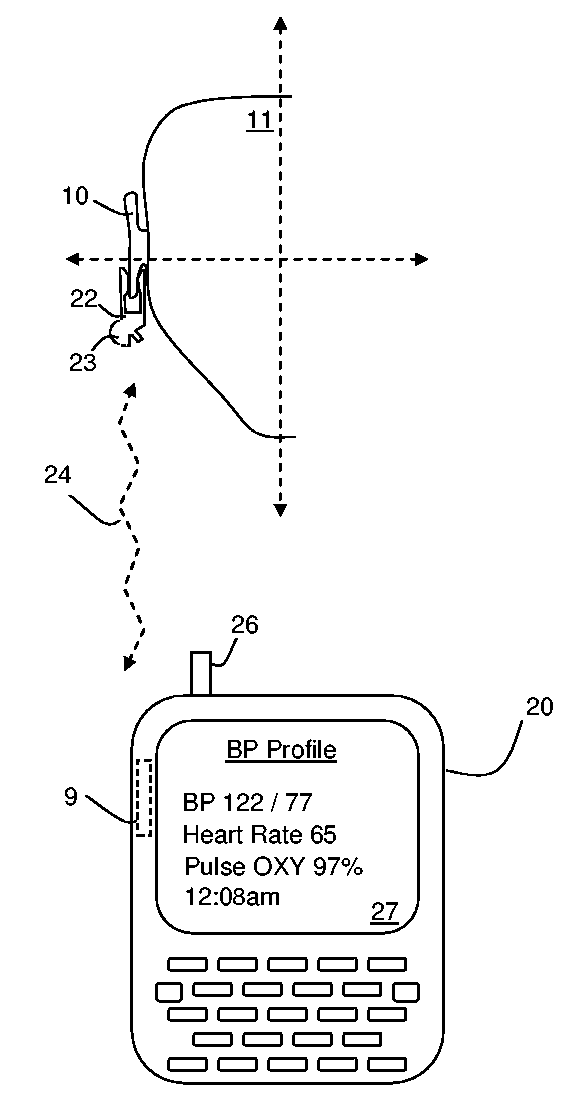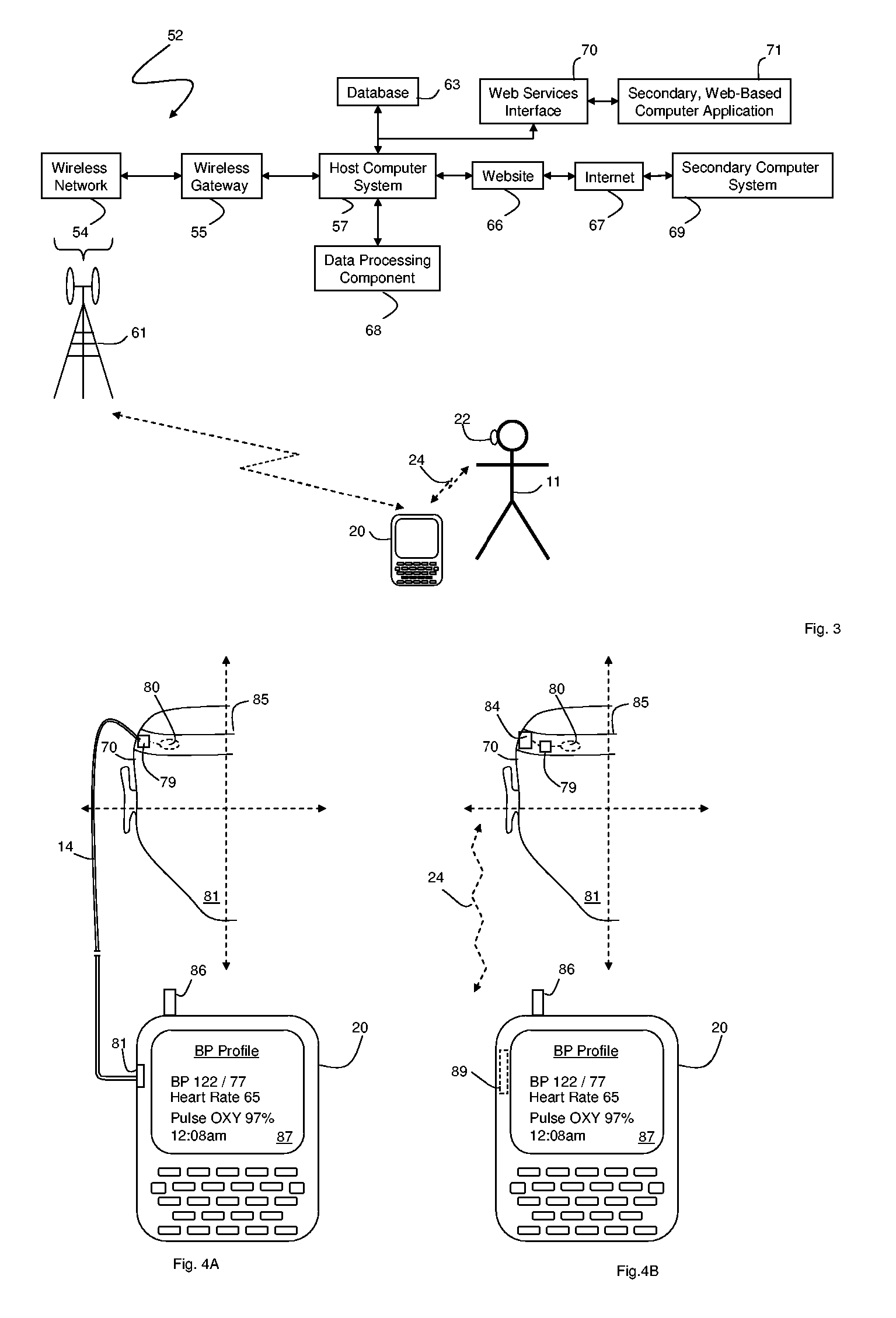Vital signs monitor using an optical ear-based module
a monitor and optical ear technology, applied in the field of cuffless monitors, can solve the problems of reducing the accuracy of measurement, motion-related artifacts, etc., and achieve the effects of low signal-to-noise ratio, less motion, and less motion-related artifacts
- Summary
- Abstract
- Description
- Claims
- Application Information
AI Technical Summary
Benefits of technology
Problems solved by technology
Method used
Image
Examples
Embodiment Construction
[0024]FIG. 1A shows an optical ear module 12 and wireless hub 20 for measuring vital-sign information (e.g., blood pressure, pulse oximetry, and heart rate) from an ear 10 of a patient 11. The optical ear module 12 clamps onto a lobe of the patient's ear 10 to make the measurement. An electric cable 14 connects the optical ear module to the wireless hub 20, which is typically worn around the patient's belt or arm like a portable radio. The optical ear module 12 features a pair of LEDs (described in detail with reference to FIG. 2) that generate, respectively, red and infrared radiation. A photodetector detects transmitted and scattered radiation and send this information to a microprocessor, which analyzes it as described in detail below to determine the vital signs.
[0025] The wireless hub 20, which can be a conventional cellular telephone or personal digital assistant, includes a serial port 25 that receives vital-sign information from the optical ear module 12 through the cable 1...
PUM
 Login to View More
Login to View More Abstract
Description
Claims
Application Information
 Login to View More
Login to View More - R&D
- Intellectual Property
- Life Sciences
- Materials
- Tech Scout
- Unparalleled Data Quality
- Higher Quality Content
- 60% Fewer Hallucinations
Browse by: Latest US Patents, China's latest patents, Technical Efficacy Thesaurus, Application Domain, Technology Topic, Popular Technical Reports.
© 2025 PatSnap. All rights reserved.Legal|Privacy policy|Modern Slavery Act Transparency Statement|Sitemap|About US| Contact US: help@patsnap.com



